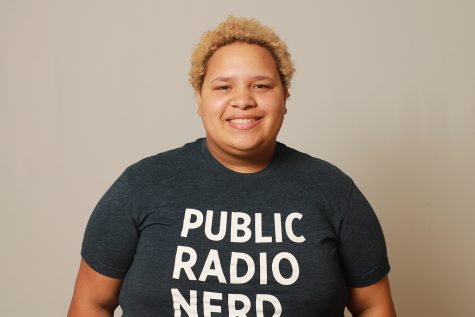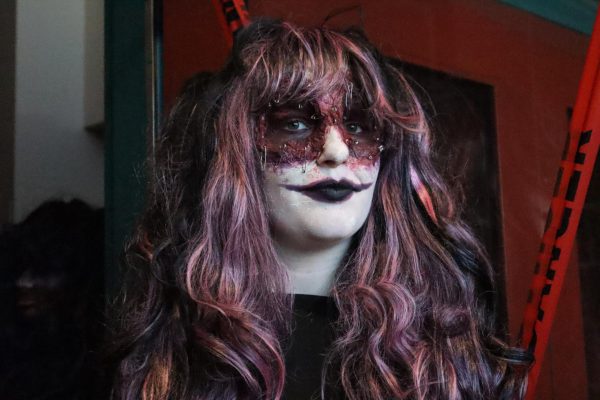Fine Arts teachers adjust to online lessons, shows
Performing In a pandemIc- Orchestra teacher Thomas Mann shows off his online teaching rig that he uses when teaching from home.
March 30, 2021
When schools went virtual back in Mar. of 2020, many students and teachers had to quickly adapt to the new reality. Classes like Fine Arts, which typically rely on face-to-face instruction and performances, have had a harder time than most to figure out how to do it in an almost completely virtual experience.
“We use [a classroom structure] similar to that of a flipped classroom,” said Jordyn Marsh, director of the Diamond Dazzlers dance team “I will pre-record new material and girls will come into the period being expected to know it. We use [the class] period to clarify counts, directions, or any questions that may arise from watching the video.”
This comes with drawbacks for dancers that just aren’t a part of a non-virtual world.
“In normal practices, there is no fear of girls hitting a nightstand or their kitchen table. It’s extremely limited what we can and cannot do due to girls having different access to space at home.” Marsh said, though, this isn’t the greatest drawback for her as a teacher. “As the teacher, I cannot also see their entire bodies on the screen due to limited lens range,” she said “I typically am only able to give feedback on the upper half of the body.”
She said that internet service can often add delays that make it hard to pay attention to these things.
“We have some girls starting way later than other girls on the screen so it makes it very chaotic to watch and understand if everyone understands counts and movement.” Choir director and piano teacher Stephanie Rodriguez faces a different issue though it also boils down to internet stability.
“I cannot hear any students while we are in class. Music is about 90% listening. I only hear them if they share their microphones and considering their wifi is stable.” Rodriguez said. “Other than that, I miss hearing the cacophony of pianos all playing at different times, and the sonorous effects choral singing has on each and every one of us.”
Senior Rebeka De La Cerda, an orchestra and theater student, struggles with her remote music education as well. “Orchestra is incredibly reliant on everyone being together to weave and create harmony, balance and play together in specific styles,” she said. “We’ve been apart for so long it can be difficult to find that balance.”
Despite these barriers, many programs are able to share their art on YouTube or other services. Junior Joel Rubio said that while they aren’t able to have their usual concerts, they’re able to record pieces and share them online, the viewing of which is a great way to support fine arts students.
“A lot of these students and teachers are working twice as hard to keep this going and that work shouldn’t go unnoticed and disregarded,” De La Cerda said. “I’m so proud of everyone for doing their best to adapt because this isn’t easy.”







